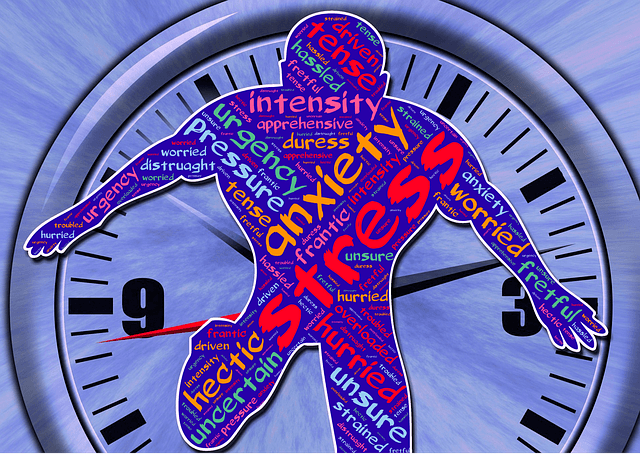
by Maureen Cooper | Mar 11, 2019 | Stress, Yourself
Photo by Daria Nepriakhina on Unsplash
It’s a great life skill to able to look on the bright side as we negotiate the ups and downs of everyday living. The ability to look at a glass and see it as half-full instead of half-empty is surprisingly rare but it’s impact on wellbeing is considerable. It increases our resilience and makes us more attractive to be around. However, we all know people for whom the glass is always half empty. It’s the sort of person for whom there is always a ‘but’, whatever good circumstances are coming their way. Lovely weather is forecast for an outing, but they always take an umbrella. They manage to negotiate a pay rise, but it is not as much as they hoped for. They cook a beautiful meal for a dinner party, but now they are exhausted. Their negativity bias is alive and flourishing!
If we are honest, we can see that although we are not like this all the time, we all have moments where we are just focused on how unsatisfactory things are.
Why is this?
We are constantly on the lookout for threats
Our brain has evolved to keep us safe, alive and reproducing our species. We are programmed to pay more attention to negative stuff and to remember it longer. When you think of our lives as hunter-gatherers this makes sense. Finding a new food source was a good thing but discovering a berry that was poisonous and killed you was much more important—so we remembered it and avoided it the next time we came across it. This is sometimes referred to as the brain’s negativity bias. The brain is always tracking for threats to our survival and once we locate one, then we store it away to remember for the future.
What this means for us now
Of course, in our modern lives there can still be real threats to our physical survival but mostly the negative stuff the brain is identifying and storing away is just part of the wear and tear of everyday life. If we fall out with a family member or get a harsh comment from our boss, it weighs on our minds and we tend to replay it over and over again. An unpleasant encounter in the supermarket over-rides all the courtesy and friendliness we usually encounter. If our favourite restaurant has an off day, all the delicious meals we have eaten there previously seem to be less believable.
The trouble with all this is that can lead to us giving into anger, frustration or jealousy. By focusing on negativity, we highlight our problems and bring them into the forefront of our experience. Giving such weight to the difficult things makes it easier for us to give into our more troublesome emotions, such as anger, fear and jealousy. It can make us tougher on other people because we are operating from this position of threat.
Two aspects of our negativity bias we can stop straight away
-
Cut the anxiety loops in our minds
We can try to get out of the habit of going over and over stuff that has bothered us and replaying different ways we should have dealt with it. Ruminatingin this way only works the negative memory in deeper and ensures that it stays with us longer. One of the most effective ways of cutting through rumination is with mindfulness meditation. By helping us to be awake in the present moment, we can bring our mind back from going over stuff that has already happened, or other stuff we are worried will happen in the future.
-
Stop beating ourselves up
We can try to stop telling ourselves off for the way things turned out. How many times do we say to ourselves, ‘I should have….’, ‘If only I had….’.’Why didn’t I?….’ Most of us have a voice in our headthat give a running commentary on how we are managing and sadly, its commentary is often negative. The thing is that we did not do any of those things and it is too late to change it. We can take note for the next time but beating up on ourselves will only increase the negative impact. The most effective way to transform our inner critic into something useful is by showing ourselves the same kindness that we would show a friend in a similar situation.
Here are more good habits that can overcome our negativity bias
-
Notice the good things that happen to us every day
These can be small things—a sunny morning, a smile from a stranger, a helping hand from a friend. Don’t just notice the first thing—keep your eyes open for all the small but precious moments throughout the day.
-
Allow yourself to feel good
There is no need to feel guilty or to worry that it is selfish. A moment of happiness, or satisfaction will help you to be more open and accessible to other people. You can share the benefit.
-
Savour the experience
Once we have noticed something good happening, then we can take a moment to savour the experience and let it sink into our consciousness. We are often too quick to shrug off the good stuff. By allowing ourselves to enjoy moments like the smelling the freshly baked bread in the local bakery, or pausing to watch children playing in the playground we are acknowledging the good experiences and letting them in. This will help to feel more satisfied and less in need of external stimuli.
-
Express appreciation
We can even take a moment to express appreciation for some of the many, small, wonderful things that happen to us every day.
Here is an exercise that you could try
The purpose of the exercise is to help us to connect with experiences that can help us to undermine our tendency to focus on the bad stuff. By really seeing the good stuff and appreciating the effect it has on our moods and state of mind, we can learn to apply it when unpleasant things happen to us. This exercise shows a way of doing this after the event but as we get used to working this way, we can apply it as things happen.


Let me know how you got on with the exercise. I would love to hear how it worked for you.
If you have enjoyed this post and found it useful, you might want to take a look at this free 5-day e-course, HOW TO MAKE SELF-COMPASSION YOUR TOP PRIORITY
You can find out more here


by Maureen Cooper | May 3, 2018 | Kindness, Relationships, Stress, Work
When you are getting ready for work in the morning, is there a work colleague who comes into your mind who you dread seeing, and would rather avoid? If there is, then the chances are that you have a difficult person to deal with at work. Unfortunately, it’s not likely to be a problem that only you are facing. Difficult people at work can cause a ripple effect that has negative consequences throughout the workplace.
Everyone is difficult some of the time of course, so what does it take to be seen as a ‘difficult person’? There are people who complain all the time and are impossible to please. Then there are others who seem to want to turn everything into a competition, or worse, a battle. I have worked with people who treat their staff pool as a free audience for them to play out their own personal soap opera—they demand attention and tend to suck all the energy out of a team. Perhaps you’ve met the perfectionist? Someone who cannot accept anything that is less than perfect and projects their exacting and unrealistic standards on everyone around them. Quieter but just as deadly is the person who quietly goes behind everyone’s backs and gossips and manipulates to get their own way.
Toxic behaviour of any kind takes up time, energy and resources to deal with—all of which could be applied to the actual work to be done. Such behaviour can impact productivity and lower inspiration and morale among any team. It causes stress, absenteeism, and a higher rate of staff turnover.
However, it does not have to be all bad. Difficult work colleagues can help to focus our attention and encourage us to check our own habits at work. Let’s look at some practical, accessible steps that anyone can take to help them to deal with a difficult person at work without risking any of these negative outcomes.
-
Paying attention
Maybe as you read this you are thinking that you are always paying attention, and this is too obvious to mention? Perhaps you have not heard about the researchthat was done at Harvard University in 2010. It showed that for almost 50% of our waking hours, we are thinking about something different to what we are doing. This means that for almost half our life we are not fully present to ourselves and what we are doing.
Let’s take a moment to consider what that means. If our minds are elsewhere when we are interacting with another person then we are going to miss all kinds of signs as to what is actually going on. Our memoryof the interaction will be flawed and incomplete. We are going to be seeing people and events as we think they are, rather than how they actually are.
This is particularly important when dealing with a person we experience as difficult. We are going to need to able to discern clearly the other person’s behaviour, as well as our own responses to it. It won’t help to get caught out by defensive reactionswhich could add to the problem. Things will only get worse if we exaggerate the difficult behaviour of the other person. Developing equanimity, on the other hand will give us the grounding we need to understand and work with the challenges they present for us.
What we can do
One of the best ways to learn to be present is to make mindfulnesspractice part of your everyday life. Try to spend at least 10 minutes every morning sitting on a cushion, or hard-backed chair connecting with your breath. Simply rest your attention on the rhythm of your breathing. When your attention wanders away, notice it has wandered and bring it back. Keep doing this over and over again. Slowly, steadily you are training your mind to be present.
During the day we can use STOP moments—very short moments of mindfulness meditation.
This is how they work:
- Pause with whatever you are doing
- Connect with your body, feel its strength, let it ground you
- Take a few deep, slow breaths—release any tension you are feeling
- Let your thoughts come and go without chasing after them
- Enjoy the few moments of calm and spaciousness.
- Take that feeling with you as you pick up your activities.
-
Listening well
I don’t think I have ever met someone who owned up to being a poor listener. Each of us believes that when people talk to us we hear what they are saying. Sadly, most of the time we only just scratch the surface. We are used to putting our case, telling our story and we want others to listen to us. If we put ourselves in the centre, then it is hard to embrace the whole circle. Much of our listeningcomes from a place of believing we have the correct response, or the right solution and we can’t wait to share it with the person we are talking with. That comes across for the person talking to us, who senses that we are putting our own reactions ahead of their needs.
Susan Gillis Chapman has written a book, The Five Keys to Mindful Communication in which she uses the three colours of traffic lightsto help understand the different levels of communication. When we have someone at work who we are having problems with, the chances are that our communication is going to be the red light, where defensive reactions are predominant. At these times, how we listen is of over-riding importance. Our difficult person is expecting to not be heard, is almost provoking misunderstanding. We cannot afford to shut down and close ourselves off from the signals they are sending. If we can demonstrate that we are trying our best really be present and to listen without the inner commentary of our own opinions, then we have a chance to move to yellow light communication, where things can become more fluid. Of course, our goal is the open communication of the green traffic light.
What we can do
- Try to avoid conversations with your difficult person when you are tired, hungry or stressed.
- When you know you are going into an interaction with them, try to take a STOP moment beforehand.
- Listen with your heart as well as your head.
- Ask yourself what is really going on for the other person.
- Look for any emotional clues.
- Watch out for repeated words or phrases—the chances are these are the issues that are on the other person’s mind the most.
- Consider your attempts to listen with an open mind and heart as your contribution to healing the situation.
-
Give up judging others
Jon Kabat-Zinn, one of the leading figures in the mindfulness movement, described mindfulness as being, an intentional, non-judgmental awareness of the present moment. Why was it necessary to highlight this quality of non-judgment? If you think about it, we judge just about anything. In fact, we divide the world up into things we like and want, things we don’t like and don’t want and things we don’t really care about. We spend a great deal of effort going after the things we want, because we think they will make us happy and avoiding the things we don’t want, because we know they will make us unhappy. The thing is that none of it works. Lasting happiness is much harder to achieve than we thought and it’s hard to avoid challenging things happening to us.
Our like, don’t like and don’t care attitudes are just as easily applied to people we know, as it is to the things that happen to us. We hold our friends close and avoid people we do not like and in between is a huge mass of people we don’t ever really pay attention to. If we have a difficult person at work, they are likely to fall into the category of ‘don’t like and don’t want.’ Obviously, this is a weak position to try to find a solution from.
What we can do
We already mentioned the importance of equanimity as a basis for working with difficult people. It enables us to be present to the person and the situation but to not be drawn into it, to not be affected by it.
- Without equanimity we are defenceless in the emotional territory of the difficult person.
- With equanimity our limbic systemis under control and our neocortexis in charge.
- We can see things as they are, rather than from the point of view of our own self-focus.
- It is not necessary to draw courage from judgments which enforce our own opinions and prejudices.
- Equanimity allows us to be open to what happens, rather than pre-judging any outcomes.
-
Try kindness
It is easy to think that we don’t have time for kindnessin the workplace but this is a misperception. Being kind does not take more time, it just requires us to be present to ourselves, our work colleagues and the situations we find ourselves in.
Jonathan Haidthas researched something he calls elevation, or a heightened sense of wellbeing. This is the effect of people either experiencing kindness themselves, or witnessing it happening between other people and feeling the benefit personally. When this kind of interaction happens in a work environment it has the effect of building trust, commitment and loyalty. How we try to deal with a difficult person at work can contribute to the overall wellbeing of a workplace.
We’ve seen that it is all too easy to want to avoid difficult people at work, and to not have to deal with them—but let’s take a moment to try and see this from their point of view? Few people set out to be disliked—if their behaviour is provoking dislike, somewhere that is probably causing them distress.
What we can do
- Ask yourself what you know about your difficult work colleague
—are they under stress, is there something going on at home?
- Look for any small thing that you like about the person
—maybe you have the same taste in music, or they like the same movies that you do?
- Try to separate the person from their actions
—all of us do stuff which is not always nice, but it does not mean we are all bad people.
- Whenever you can, try to give your difficult person the benefit of the doubt.
- Observe how they are with other people
—are there other people they get on well with?
—I once had to work closely with someone who said I reminded him of his mother (with whom he had a problematic relationship). Although I found working with him very intense, I noticed that many other people sought him out for collaboration. The problem was something sparked very directly between the two of us.
-
Don’t forget yourself
Having a difficult relationship at work can be very disheartening. We can feel guilty, inadequate, somehow reduced by being embroiled in a difficult communication. It’s important to remember that we are one part of the puzzle and that the problem has many elements. At the same time, it helps to recognize that although we might not have started the problem it is inevitable that somewhere along the line, we could play a role in perpetuating it. We need to take time to look into our own behaviour and check our own emotional habits and vulnerabilities.
My main meditation teacher always used to say that if you want to remove a difficult person from the world, you can begin by looking into where you need to disarm your own destructive tendencies.
What we can do
- Show yourself some kindnessand understanding when you are under pressure
- Take steps to manage your stress and enhance your wellbeing at work
- Try not to take things personally
- Make mindfulness meditation part of your daily routine to help refine your discernment, develop equanimity and keep things in proportion.

Hello there!
If you found this post helpful and would like to go further, try this online course
9 WAYS TO COPE BETTER WITH YOUR WORK FRUSTRATION
You can sign up here https://www.awarenessinaction.org/cope-better-with-work-frustration/

by Maureen Cooper | Jul 29, 2017 | Compassion, Kindness, Meditation, Mindfulness, Relationships, Yourself
A few weeks ago, my partner and I were out with some friends for dinner. We had not seen them for a while and we had a lot to talk about. On top of that, one of the friends was going through a bit of a tough time and needed support—which we happy to give, except that the people at the table behind us were celebrating and extremely noisy. It was one of those weird situations where you found yourself raising your voice to talk about delicate things. I found myself beginning to experience what I can only describe as ‘restaurant rage’.
I was focused on our small group at our table and found myself glancing over my shoulder in increasing irritation at the thoughtlessness of the noisy crowd behind me. It seemed to be that they were inconsiderate and thoughtless, with no care for the enjoyment of the other diners.
Eventually, after a while, a sense of doubt set in. How was my behaviour any different? I wanted things quiet and peaceful so my friends and I could have the environment we wanted. The celebrators wanted to have a good time. I wanted things one way and they wanted them another. Why did I assume that my way was best? Why did I feel entitled to it?
It got me thinking about how our default position is so often to want others to change to fit in with how we want things to be. It is so much harder to change our own behaviour to be able to manage the challenging situation more effectively.
What follows are my ideas about how to manage a situation like this next time it comes up. I live in a city; noisy restaurants are common—so turning restaurant rage into kindness seems like a good investment.
Take care of your irritation
If you are going to change the way you are reacting you need to give yourself some time to realise you are irritated and then to calm down. I usually find a few long, slow breaths will do it. No-one needs to notice—you can just rest your attention on your breath for a few moments until you feel yourself coming back.
The next thing is to get a handle on what is actually happening, rather than what you imagine is happening. In my dinner example, the party at the nearby table were not nasty people on a mission to spoil my evening—there just wanted to enjoy themselves.
With this perspective, it’s easier to remember that it’s not all about you. You have the right to want things to go the way you wish but then so does everyone else. Sometimes things go your way, sometimes they go another person’s way. There’s not a lot we can do to change that and getting irritated about it just makes you miserable.
Pay attention to the sound without the storyline
It’s possible to use sound as a support for meditation. Of course, if you are in a restaurant you might not want to go off into a corner for a meditation session but you can still use the principle. Just notice the sounds around you, without judging and without building a storyline about them. You could call it a Teflon relation to sound—just notice it with your full attention but without commentary. Going back again to my restaurant example—I immediately made a story about my friend and I needing quiet and the people nearby ruining it with their noise. Thinking back, it’s quite likely they were not even particularly aware of us.
We relate to the world through our senses but we do have a choice as to how we are with the information they provide. We don’t always have to react.
If you find it hard to make meditation a regular part of your life, remember that yoga can also help you to find some inner peace. Yoga is a way to relax, unwind, and become one with everything around you. It can help you to develop resilience in the same way that meditation can.
Enjoy other people’s pleasure
When you get annoyed with the behaviour of other people your stress levels rise and you feel uncomfortable. In the restaurant, I could feel myself getting tight with trying to block out the noisy table.
A totally different approach is to notice joy when it is happening around you and to allow it to nourish you.
This might involve dropping your own agenda and simply opening to the enjoyment of others. It could mean that instead of protecting yourself, you allow yourself to open to the happiness of other people. It does not have to be your happiness but it can lift your heart just the same.
Always wish them well
The last of these remedies for restaurant rage is wishing people wellbeing and happiness. You may have heard of Loving Kindness Meditation. It’s a meditation focused on wishing happiness and wellbeing for yourself, for people close to you, for people you do not know so well and even for people you find challenging.
Even if you are not familiar with the whole meditation, you can still focus on a person, or group of people and in your mind, say something like, May you be happy, may you be well. I find it a great exercise to do when I am in crowded places and there are many people. It brings me a feeling of ease.
Do you have any tips for turning rage into kindness in city life? If you do please add them in the comments section.

by Maureen Cooper | Mar 31, 2017 | Mindfulness, Self-compassion, Yourself
My recent self-compassionate experience
It was in Barcelona a few weeks ago, that I got a direct lesson on the importance of mindfulness in supporting being self-compassionate. I was there to give a workshop on transforming stress and it was on the second day, after lunch, that I got a choking fit. I had hurried back from lunch and was slightly hyper because I was trying to lift the everyone-wants-a-siesta energy. I took a sip of water and it just went completely wrong. It is easy for me to choke and I am only too aware that if it goes really badly, then it’s possible that I will vomit. Not something any workshop facilitator is looking to do!
I was there to give a workshop on transforming stress and it was on the second day, after lunch, that I got a choking fit. I had hurried back from lunch and was slightly hyper because I was trying to lift the everyone-wants-a-siesta energy. I took a sip of water and it just went completely wrong. It is easy for me to choke and I am only too aware that if it goes really badly, then it’s possible that I will vomit. Not something any workshop facilitator is looking to do!
At first I tried to fight it and just carry on. Then it occurred to me to excuse myself to the bathroom but then people would have come after me and the workshop could unravel. There were a few moments where I just pretended that I wasn’t there but of course that didn’t work either. So, I gave up and just spluttered on until I could find a place to settle my breathing and take a cough sweet. Things slowly settled.
The three elements of self-compassion
Looking at the group I saw a sea of worried, slightly anxious faces. Something needed to be done. As it happens I had been starting to explain the three elements of self-compassion—self-kindness, as an antidote to self-criticism stemming from the fight response; common humanity, as an antidote to self-isolation stemming from the flight response, and mindfulness, as an antidote to self-absorption stemming from the freeze response. I realized that I had already run through the whole fight-flight-freeze stress response in myself, so I decided to try and use what had happened to explain the antidotes and how they work.
Self-kindness came in as allowing myself to acknowledge something unpleasant was happening but not beating myself up about it. It wasn’t my fault. Seeing the concern on the faces of the group reminded me that they knew exactly what I was going through and wanted me to be OK. There was common humanity. However, the basis of the whole thing was that because I could apply mindfulness I was able to keep the whole thing in proportion and not over-react to my predicament. There was no panic—it could all be managed.
Let’s look more closely at how mindfulness supports self-compassion.
5 reasons we need mindfulness for practicing self-compassion
-
To enable us to notice our moments of suffering
From an evolutionary point of view, we are programmed to turn away from anything that threatens us, and to keep focused on staying alive. This is so we can pass on our genes. On an everyday level, this means we put our energy into carrying on with whatever we think needs to be done—which does not give much time for self-care.
Our stress response is built to fight, run away or freeze and wait till the threat passes. So, our tendency is to rage against our suffering, or distract ourselves from it, or hide away and lick our wounds. It is hard for us to simply notice pain. This means that we are not always very skilful in knowing how to care for ourselves, especially regarding emotional, pain.
Furthermore, when we are suffering, our tendency is to focus on the failure rather than the pain. If you make a mistake at work, don’t you quickly find yourself feeling stupid, rather than taking a moment to acknowledge how wretched you feel for the mistake in the first place? When you have an argument, aren’t you more likely to spend the moments after it re-running the scenario and trying to see what you could have done differently? How often do you give yourself a moment just to feel the pain of the disagreement?
Mindfulness means being in the present moment and experiencing it fully, as it is. If the present moment is one of suffering, then we taste it fully. By not turning away, we give ourselves a moment to acknowledge what is going on for us and to see what it is we need to do about it.
-
To encourage being non-judgemental
Jon Kabat-Zinn describes mindfulness as being a moment-to–moment, non-judgemental awareness. Let’s look at that idea of being non-judgemental. For much of time we are looking at what goes on around us and dividing it up into stuff we like, and want more of; stuff we don’t like, and wish would go away, and stuff we don’t really care about. When we practice mindfulness, and become present to our experience, there’s an opportunity to be curious and to just notice what is going on. We don’t need to overload our experience with judgments, that tend to narrow things down.
In terms of self-compassion it can mean that we do not go straight into the monologue of our critical voice, telling us how we are not getting it right and falling behind. We can pay attention, rather than berate ourselves. This gives us a chance to get a more balanced view of what is going on and how we want to deal with it.
-
To take the simmer out of our reactions
Our stress response is basically the same as that for any other mammals but we differ in one important way. When an animal has escaped from a threat it faces—say the zebra has escaped from the lion—it quickly settles and returns to quietly grazing. We don’t do this. Our minds keep the threat alive long after it has passed. Think of the last time you had an argument with your boss—didn’t you spend hours afterwards thinking about how it went and what you could have done differently? Perhaps you discussed it with friends?
Our tendency to ruminate and worry and to go over and over things that have upset us, keep us in a constant state of low-grade stress—a kind of simmering stress. In this state it is harder to practice self-kindness, or to remember common humanity. If we are being present to what is happening to us now, not what has already happened, not what might happen shortly, then there is nothing to ruminate about.
Like the zebra—who is focused on grazing on the grass in front of it—we can engage with our present activity wholeheartedly. We don’t need to follow our wandering mind.
-
To have a choice in how we react
When we see how fast our moods and feelings change it’s maybe hard to believe that there is a tiny gap between something happening—an action, and our reaction to it. When we are feeling quite mellow and relaxed we can sometimes sense this gap but when we are worried, or stressed it seems to disappear. For me, self-compassion means using all our resources to work with ourselves in a healthy and constructive way. When we over-react to a situation and have to deal with all that entails, we are setting ourselves up for self-criticism and feeling bad.
With mindfulness, we are engaging with the present moment with our full attention and without judgment. Going from moment to moment with curiosity enables us to have a more balanced view of things as they occur. This makes it possible to put space around events and gives us the chance to notice the gap. Then we can have some choice in how we react, rather than simply being dragged along by our emotions and moods.
Often when we calm down after something has upset us, and look back at what has taken place, we can see that our reactions have encouraged us to exaggerate. Think of how mad you can get at another driver who seems to be cutting across you! Or how frustrated you feel when your internet connection falls away! When we are mindful, we are more able to see things as they are, without exaggeration. We are not trying to prove anything. We are just being with what comes along. So, even if you do over-react to a situation, with mindfulness you can more quickly bring your attention back and settle.
-
To avoid over-identification
Remember, from a self-compassion viewpoint that mindfulness is the antidote to freezing up, which leads to self-absorption. When we are not able to step back as we were discussing in point 4, then our sense of self becomes completely wrapped up in our reaction to what we are dealing with. It can be so easy to be caught up in our own personal soap opera.
Remember a time when you were faced with a big disappointment—someone else got the job you applied for, your relationship broke up or perhaps the holiday you really longed for turned out to be too expensive. A disappointment is a moment of suffering and we need to notice it and take care of ourselves as we work through it. When we over-identify with our reaction, then we deny ourselves the chance to work through it in a way that will enable us to heal. Our reaction becomes the main story, rather than our return to wellbeing.
Mindfulness of the present moment balances out our attention and prevents us from falling into a repeating loop of reaction and disappointment. Then we can apply self-kindness and see our problems in relation to those of other people. Mindfulness fuels self-compassion.

If you found this post helpful you might like to check out my online course, How to be a Good Friend to Yourself
You can find out more here









